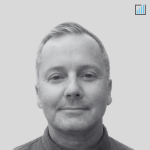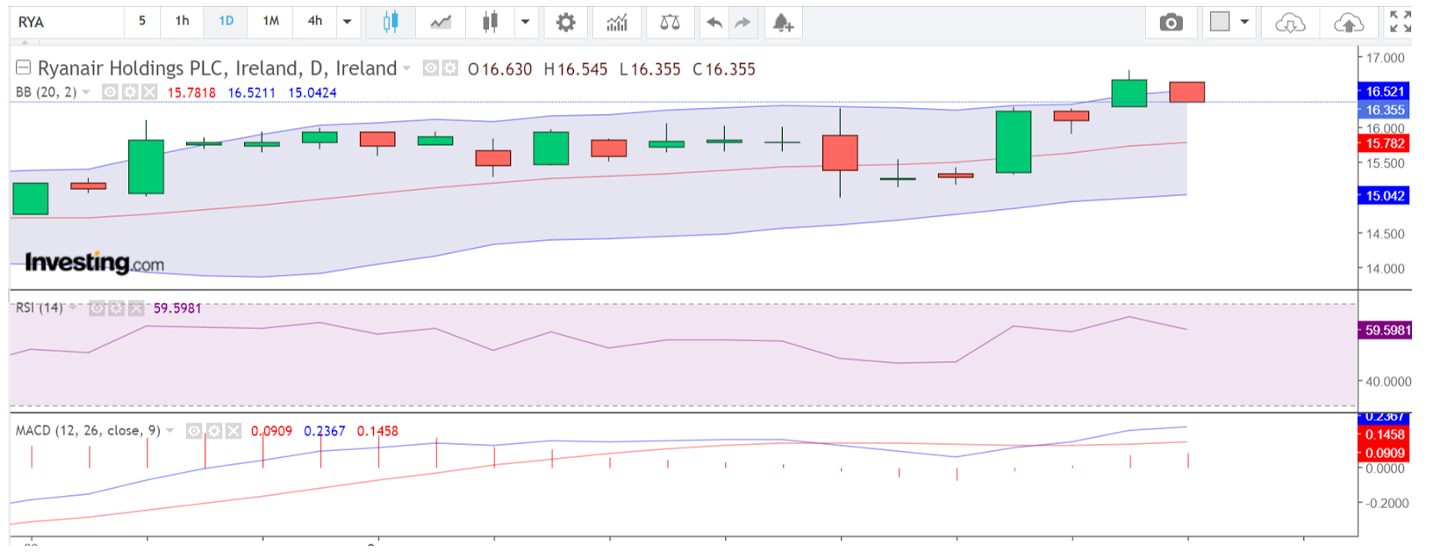CFD Trading in Ireland



Contracts for difference (CFDs) are popular in Ireland as a flexible way to trade financial markets. You can profit from rising and falling prices, making CFDs versatile for managing risk and capitalizing on short-term trends.
CFDs became available in Ireland in the early 2000s, following their success in the UK. However, the Central Bank of Ireland introduced restrictions in 2019 as concerns grew about the losses retail investors were incurring.
Want to start CFD trading in Ireland? This guide for beginners will kickstart your journey.
Quick Introduction
- With CFDs, you exchange the difference in an asset’s price, like the ISEQ 20 index, between the trade opening and closing. Profit if the price moves in your favor; otherwise, incur a loss.
- Leverage is a key component that allows you to control a large position with less capital. But while leverage amplifies returns, it also increases losses, so risk management is essential.
- In Ireland, CFD trading allows you to avoid stamp duty on buying shares outright, potentially reducing the cost of trading, though you still need to factor in spreads and commissions.
- CFD trading is regulated by the Central Bank of Ireland and subject to rules, notably leverage limits, margin close requirements, risk warnings, and negative balance protection.
Best CFD Brokers in Ireland
Following our hands-on tests and analysis, these 4 brokers are the best for trading CFDs in Ireland:
How CFD Trading Works
CFDs offer a vehicle to speculate on the price movements of financial markets without owning the underlying asset. You’re simply predicting whether the price of an asset will rise or fall.
One of the key features that attract traders to CFDs is leverage. With this, you can control a large position with a relatively small deposit, known as margin.
For example, if you believe that the Irish stock index (ISEQ 20) will rise, you might open a CFD buy position on it.
Let’s assume each contract is priced at €1,000, and your broker requires a 5% margin. To open a position for 10 contracts, you’d need a margin of €500 (€1,000 per contract x 10 contracts x 5%).
If the ISEQ 20 index rises to €1,050, the price difference would be €50 per contract. Closing your position would result in a profit of €500 (10 contracts x €50), minus any broker fees.
However, if the index falls to €950, you would incur a loss of €500.
It’s crucial to fully understand the margin requirements and associated risks before trading CFDs, as leverage can work for or against you.Practising on a demo account can be a beneficial first step for beginners.
What Can I Trade?
CFDs can be used to trade a wide variety of financial markets, including:
- Shares: CFDs on individual company stocks like Ryanair, CRH, and Kerry Group, allow you to speculate on the performance of top Irish companies without owning the actual shares.
- Indices: The ISEQ 20 represents the top 20 companies on the Irish Stock Exchange, and is a popular choice for index CFD traders in Ireland. You can also trade major global indices like the FTSE 100 or S&P 500.
- Forex: Speculate on currency pairs, such as the EUR/USD or EUR/GBP, which are highly liquid and offer various opportunities for short-term traders.
- Commodities: CFDs are available for commodities like crude oil, gold, and silver, allowing you to take positions on the prices of raw materials.
- Cryptocurrencies: Irish traders also have access to CFDs on digital assets like Bitcoin and Ethereum, providing exposure to the volatile and high-risk cryptocurrency market.
Is CFD Trading Legal In Ireland?
CFD trading is legal in Ireland and supervised by the Central Bank of Ireland (CBI).
The CBI stepped up its restrictions on contracts for difference in 2019. This followed a 2018 warning about the risks of CFDs and its review of the largest CFD providers in Ireland, which found that: “in the two-year period up to 31 December 2016, 74% of retail clients lost money with an average loss of €2,700.”
Firms offering CFDs in Ireland should be licensed by the CBI or an equivalent financial authority within the European Union so that they stick to strict transparency, security, and client protection standards.
Irish firms must comply with the Markets in Financial Instruments Directive II (MiFID II), an EU-wide regulation that standardizes financial markets and protects retail traders.
The Central Bank of Ireland and MiFID II restrict how CFDs can be marketed to retail clients. Brokers must:
- Avoid misleading advertising
- Highlight the risks involved in CFD trading
- Do not overemphasise the potential for high returns
Leverage is regulated for retail traders to limit excessive risk exposure. The leverage for major currency pairs is capped at 1:30; for more volatile assets like cryptocurrencies, it can be as low as 1:2.
Under Irish and EU regulations, platforms must also offer retail traders negative balance protection, which means you cannot lose more money than you deposit.
The CBI mandates margin close-out rules, ensuring that your position will be closed if your margin falls below a certain threshold (typically 50% of the required margin).
Irish brokerages must also participate in the Investor Compensation Scheme (ICS), protecting clients in the event of a broker’s insolvency. Depending on your account size, you could be eligible for compensation of up to €20,000.
Is CFD Trading Taxed In Ireland?
CFD trading is taxed in Ireland; traders must report any profits from CFD transactions to the Revenue.
CFD trading profits are typically capital gains under Irish tax law. The CGT rate in Ireland is 33%. If you profit from your CFD trades, it’s considered a capital gain. Losses can be offset to reduce your tax liability.
Traders must declare capital gains when filing their tax returns. Ireland’s tax year runs from January to December, with deadlines for reporting gains and paying any CGT owed.
If you incur losses from CFD trading, you can offset gains in the same tax year or carry them forward to offset future gains. Stamp duty does not apply to CFDs because, with CFDs, you don’t purchase the underlying asset (such as shares); instead, you are speculating on price movements.
An Example Trade
Let’s run through a detailed example to show you how a CFD trade in Ireland could unfold…
Background
I’m choosing RyanAir as an example of a CFD trade. Ryanair Holdings plc is Europe’s largest airline group and the parent company of Ryanair, Ryanair UK, Buzz, Lauda, and Malta Air.
Carrying approximately 200 million passengers annually on over 3,600 daily flights from 95 bases, RyanAir connects 235 airports in 37 countries on a fleet of 584 aircraft. A further 364 Boeing 737s will enable traffic to grow to 300 million per annum by 2034.
Fundamental Analysis
From my fundamental analysis:
- Its market capitalization was around €18.39b
- The share price was 16.450
- Its 52-week share price range was 13.41 – 21.8
- Its P/E ratio was 11.4
- The EPS was 0.944
The analyst community were tipping RYA as a strong buy. Positive news regarding the momentum of passenger numbers had helped to lift the share price from its recent lows.
My decision to take a long CFD trade was based on my belief that the share price was temporarily low.
Technical Analysis
For my technical analysis, I’m focusing on 4HR (hour) and D1 (daily) timeframes (TF). That way, I’m developing an understanding of recent short-term price movements while investigating medium-term support and reasons for any price movements.
The 4HR TF dominates in terms of trader sentiment, whereas the D1 TF broadcasts investors’ sentiment. Observing a consensus and balancing the two TFs and two distinct mindsets can help with technical analysis.
I’ve applied three technical indicators here, and when combined with Heikin Ashi candles, it should, in theory, deliver a comprehensive view of the market on both the 4HR and D1.
The relative strength index (RSI), moving average crossover divergence (MACD), and Bollinger Bands should reveal momentum, volatility, oversold and overbought potential, and whether markets are ranging or trending.
This combination of indicators and the price-action illustrated by the Heiken Ashi (HA) candlestick formations should also generate reasons to enter and the right time to exit.
It’s always worth noting that no combination of indicators provides the Holy Grail of trading, but they do provide opportunities to enter, manage, and exit trades.
With CFD share trades, I’m not always fixated on day trading specifically, entering and closing on the day.I may hold for a longer period, especially if my technical analysis evaluation has proven accurate and profitable.
4HR Timeframe
A significant bullish trend developed as the closed HA candles printed higher highs on the 4HR TF. The moving averages crossed on the MACD, and the histogram turned bullish.
Meanwhile, the price breached the 20EMA on the Bollinger Bands, which widened, indicating that the momentum was sustainable.
The RSI breached the median 50 line and entered the 70 area, which suggested that the stock is now overbought. This is an opportune moment to exit the trade at a profit.

D1 Timeframe
The D1 supported my interpretation of the 4HR lower timeframe technical analysis. The Dojis, followed by the bullish, closed candle developing with a short wick, encouraged me to take the long trade.

Execution
I entered at 15.500 and set a stop-loss at the recent 14.995 low.
My take profit limit order was set at 16.200.
Bottom Line
CFD trading in Ireland is an accessible way to engage with domestic and global financial markets.
Irish traders are subject to legal and tax requirements, including regulation by the Central Bank of Ireland and the obligation to report profits under Capital Gains Tax.
By working with regulated brokers, implementing robust risk management strategies, and staying informed about tax obligations, Irish traders can navigate the complexities of CFD trading and make informed decisions.
Still, never risk more than you can afford to lose.
Recommended Reading
Article Sources
- Central Bank of Ireland (CBI)
- Restrictions on CFD Trading - CBI
- Warning Against Binary Options and CFDs - CBI
- Investor Compensation Scheme (ICS)
- Financial Conduct Authority (FCA)
- Markets in Financial Instruments Directive II (MiFID II)
- Irish Revenue
- Ryanair Holdings plc
- Momentum of Passenger Numbers - Yahoo Finance
- Holy Grail of Trading - Stock Market Guides
The writing and editorial team at DayTrading.com use credible sources to support their work. These include government agencies, white papers, research institutes, and engagement with industry professionals. Content is written free from bias and is fact-checked where appropriate. Learn more about why you can trust DayTrading.com



